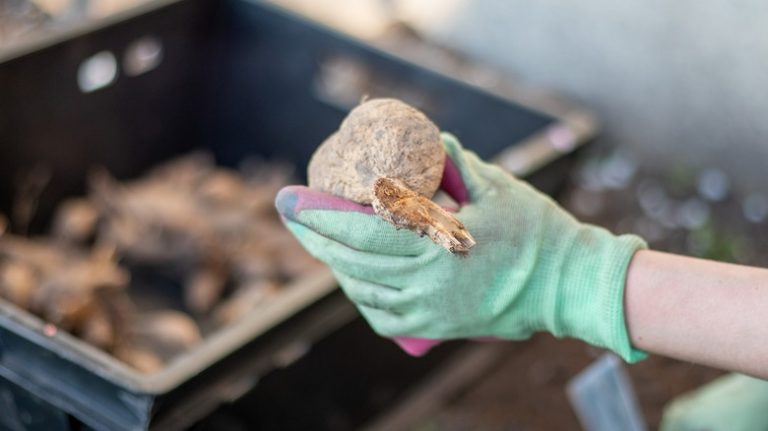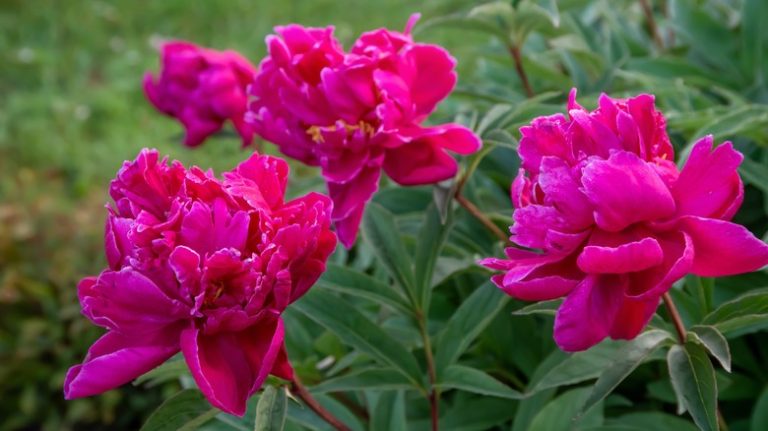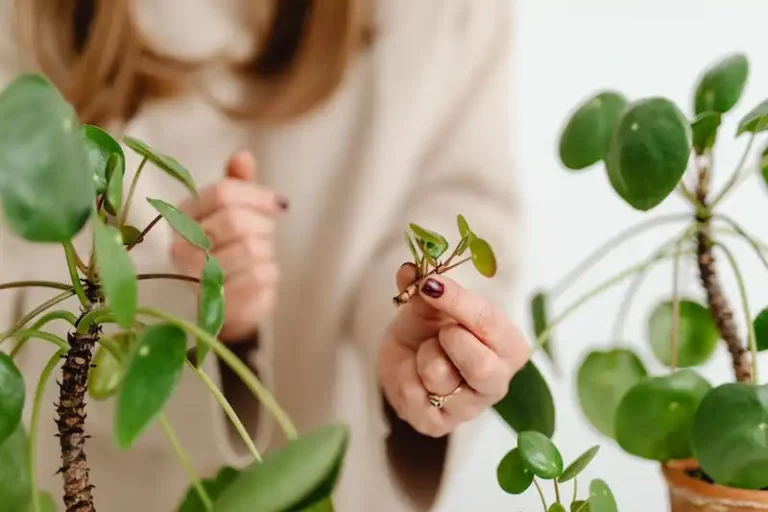Crocosmia, also known as montbretia, is a common and bold flowering plant in the Iris family (Iridaceae). It is a beautiful addition to any garden or flower bed, with its vibrant blooms and attractive foliage. Crocosmia flowers are known for their stunning display of color, with shades ranging from bright red to fiery orange.
In this article, we will provide an overview of crocosmia, as well as a guide on how to grow and care for them. Crocosmia plants are hardy and can be grown in a variety of zones, making them a great choice for many gardeners. They are typically planted in the spring or autumn, and they require full sun or partial shade to thrive.
When it comes to watering crocosmia, it is important to strike the right balance. They need regular watering, especially during their growing season, but overwatering can lead to root rot. It is recommended to water them deeply once a week, especially during dry spells, but be sure to let the soil dry out between waterings.
Fertilizing crocosmia plants is also essential for their growth and blooms. Use a balanced fertilizer every two to three weeks during the growing season to promote healthy growth and vibrant flowers. Additionally, deadheading the spent blooms will encourage the plant to produce more flowers.
Crocosmia flowers have a long blooming period, usually from mid-summer to early autumn. They make a stunning addition to flower borders or can be used in cut flower arrangements. Their foliage, which resembles that of an iris, adds height and color to any display. One common crocosmia variant is the ‘Lucifer’, known for its bright red flowers and tall height.
In terms of care, crocosmia plants are generally low maintenance and have few pest or disease issues. However, they can be susceptible to mites and aphids. If you notice any pests on your plants, you can use an insecticidal soap or a water spray to control them.
In colder climates, it is important to protect crocosmia plants during harsh winters. Mulching around the base of the plant with a layer of organic material, such as straw or leaves, can help insulate the roots and prevent them from freezing. It is also a good idea to cut back the foliage after the first frost.
In conclusion, crocosmia flowers are a great addition to any garden or flower bed. With their bold colors and attractive foliage, they will surely be a pride and joy in your garden. By following the guides and tips outlined here, you can successfully grow and care for crocosmia plants, creating a stunning display of color in your outdoor space.
Crocosmia ‘Lucifer’ – Montbretia
Crocosmia ‘Lucifer’ is a popular variant of the Montbretia plant, known for its vibrant red flowers and upright growth habit. It belongs to the Crocosmia family and is a hardy perennial that can thrive in most garden conditions.
At our company, we offer Crocosmia ‘Lucifer’ for mail order in various sizes. Our staff works hard to ensure that the plants are healthy and well-maintained before they are shipped. We have a guarantee in place to assure customers that they will receive their orders in good condition. If there are any issues with the plants upon arrival, we will gladly replace them or provide a refund.
Crocosmia ‘Lucifer’ is easy to grow and care for. It prefers well-drained soil and thrives in sunny locations. It can also be planted in containers, making it suitable for small gardens and patios. The plants should be watered regularly, especially during dry spells, to help them establish and bloom to their full potential.
These summer-blooming perennials are great for adding color to borders and garden arrangements. The flowers are a bright red shade, reminiscent of lickorish, and grow on tall, sturdy stems. They can reach a height of at least 3 feet, making them an impressive addition to any garden.
Crocosmia ‘Lucifer’ is generally pest-free, but some common problems include aphids and slugs. Regular inspections and appropriate pest control measures can help to keep these issues under control.
One special feature of Crocosmia ‘Lucifer’ is its ability to withstand cold winters. It is hardy in USDA Zones 5-9. In colder zones, it is advisable to provide some winter protection, such as mulching around the base of the plants.
Overall, Crocosmia ‘Lucifer’ is a popular and reliable choice for gardeners looking to add a splash of color to their landscapes. Its narrow, sword-shaped leaves and stunning red blooms make it a standout plant in any garden.
Our plant sizes
When it comes to Crocosmia flowers, we understand that gardeners have different preferences and needs. That’s why we offer a variety of plant sizes to suit every garden and budget.
Our Crocosmia plants are sold as bare roots, which are dormant plants without soil. This is a common method used for mail-order plants, as it saves on shipping costs and allows for easier handling and planting. Don’t worry, though – our bare-root plants come with a guarantee of healthy growth, as long as you follow our planting and care instructions.
The sizes of our Crocosmia plants will vary depending on the type and stage of growth. When you receive your plant, it may range from small bulbs or corms to larger clumps with established foliage. Rest assured, all of our plants are grown in optimal conditions and will bloom beautifully when planted in your garden.
If you’re unsure about which plant size to choose or how many to order, our handy height guide can help. We provide references to the expected height of each Crocosmia variety, so you can plan your garden accordingly. Keep in mind that these heights are approximate and can vary depending on your growing conditions.
For most Crocosmia varieties, the plants will grow between 2 to 4 feet tall, making them great additions to borders, landscaping, or as standalone focal points in your garden. Their tall flower spikes and graceful foliage provide a stunning display during the summer months.
Some types, like the popular ‘Lucifer’ Crocosmia, can reach even greater heights, between 4 to 5 feet. These taller bloomers are particularly eye-catching and add a touch of drama to any garden.
When it comes to planting, Crocosmia flowers thrive in full sun to partial shade and well-drained soil. We recommend digging holes at least 4 to 6 inches deep and spacing the plants about 12 to 15 inches apart. This will ensure proper growth and allow enough room for the plants to develop their beautiful form.
If you have any questions about our plant sizes or need assistance with your order, please don’t hesitate to reach out to our customer service team. We’re here to help you choose the right Crocosmia plants for your garden and provide any additional information you may need.
FAQs
Here are some frequently asked questions about growing and caring for crocosmia flowers:
- What is the best way to plant crocosmia bulbs?
- How often should I water my crocosmia plants?
- When do crocosmia flowers bloom?
- Are crocosmia plants hardy?
- Can crocosmia be grown in containers?
- Do crocosmia plants attract pests or diseases?
- Can crocosmia be planted near other shrubs or in borders?
- How long do crocosmia flowers last?
- Can I order crocosmia bulbs online?
- What are some popular crocosmia varieties?
Crocosmia bulbs should be planted in well-draining soil, ideally with a pH level between 6 and 7. They should be planted in early spring, around 4 to 6 inches deep and spaced about 6 inches apart. Make sure to water them well after planting.
Crocosmia plants should be watered regularly, especially during dry spells. They prefer moist soil, so make sure to water them about once a week during the growing season. However, be careful not to overwater as it can cause root rot.
Crocosmia flowers typically bloom in mid to late summer. They produce tall spikes of vibrant, trumpet-shaped flowers in a range of colors, including shades of red, orange, and yellow.
Crocosmia plants are generally hardy in USDA hardiness zones 6 to 9. They can tolerate mild winters but may need extra protection in colder climates. Mulching the soil around the plants in late fall can help protect them from freezing temperatures.
Yes, crocosmia can be grown in containers. Use a well-draining potting mix and make sure the containers have drainage holes. Place the containers in a sunny location and water them regularly. Container-grown crocosmia may need to be divided and repotted every few years.
Crocosmia plants are generally resistant to pests and diseases. However, they may occasionally be susceptible to aphids and spider mites. Regularly inspect your plants for any signs of infestation and treat them accordingly.
Yes, crocosmia plants can be planted near other shrubs or in borders. They can add a bold splash of color to your garden and complement other flowering plants. Just make sure to provide them with enough sunlight and well-draining soil.
Crocosmia flowers typically last for a few weeks, depending on the weather conditions. Deadhead the faded flowers to encourage more blooms and prolong the blooming period.
Yes, you can order crocosmia bulbs online. Many garden centers and mail-order companies sell crocosmia bulbs for shipping. Make sure to choose a reputable company and follow their planting and care instructions.
Some popular crocosmia varieties include ‘Lucifer’, ‘Emily McKenzie’, and ‘Montbretia’. ‘Lucifer’ is known for its tall, narrow green foliage and vibrant red flowers. ‘Emily McKenzie’ has bright orange flowers, while ‘Montbretia’ offers a mix of red, orange, and yellow blooms.
If you have any other questions or need more specific guidance, don’t hesitate to reach out to our knowledgeable staff. We are here to help and provide you with the best possible service for your crocosmia growing needs!



